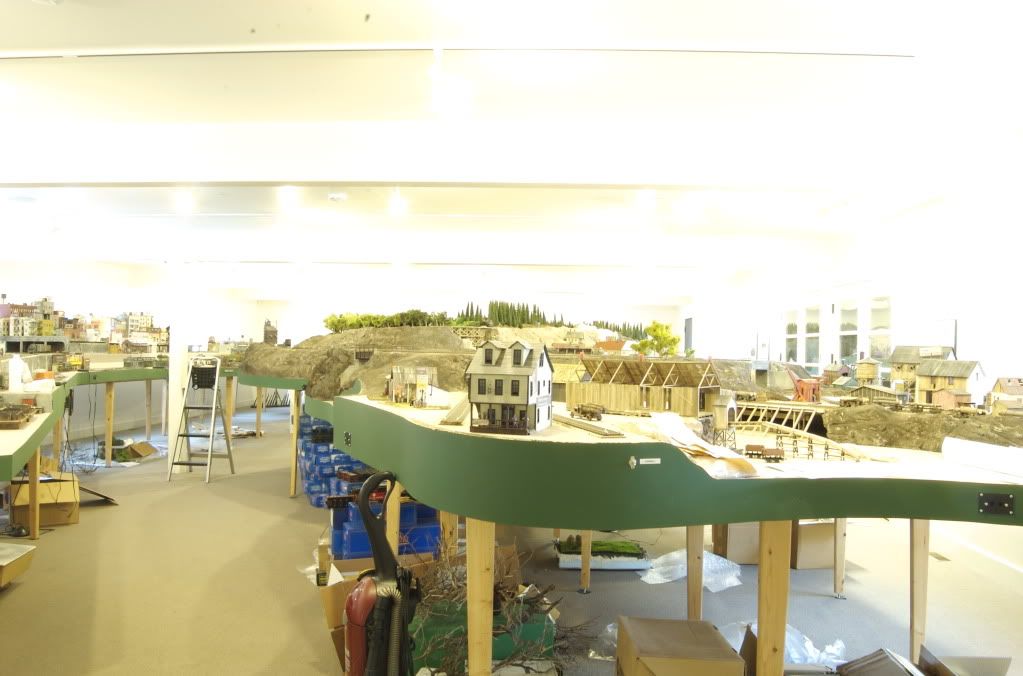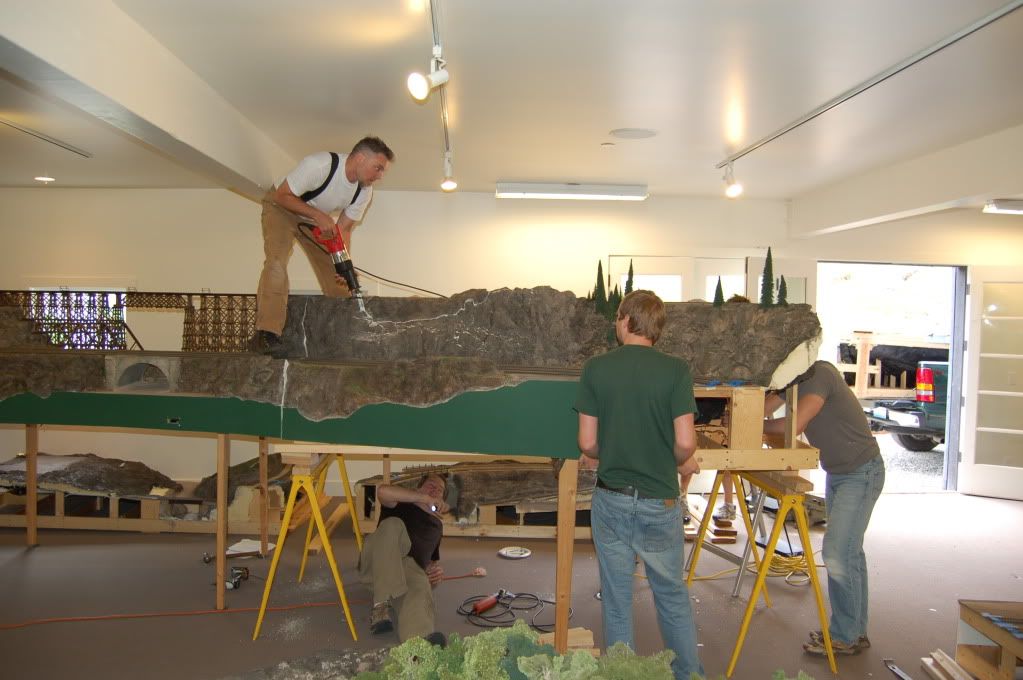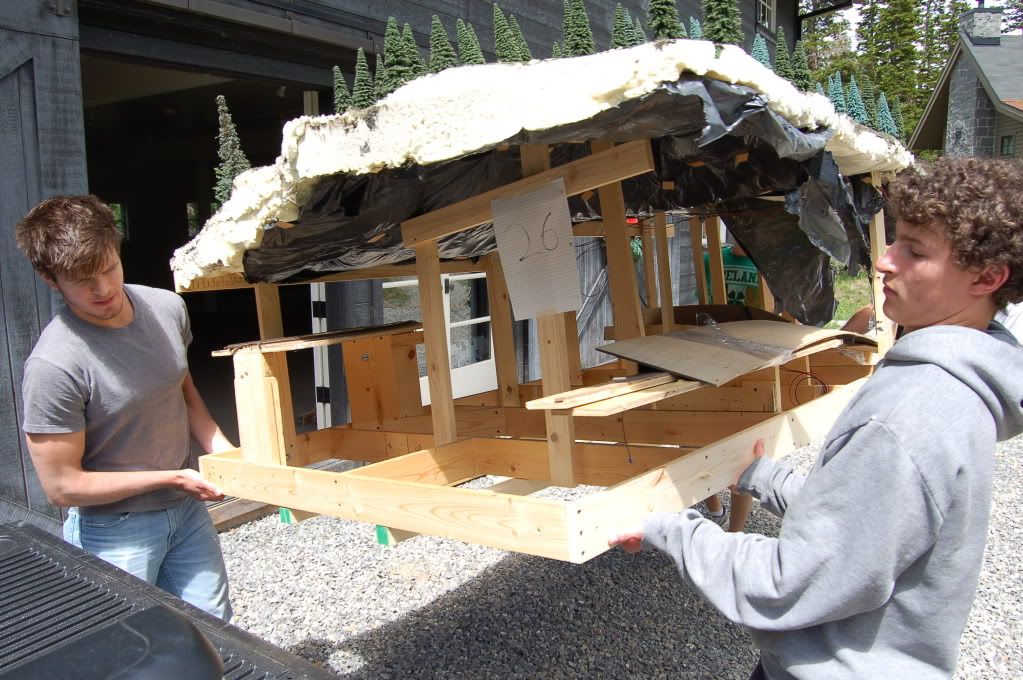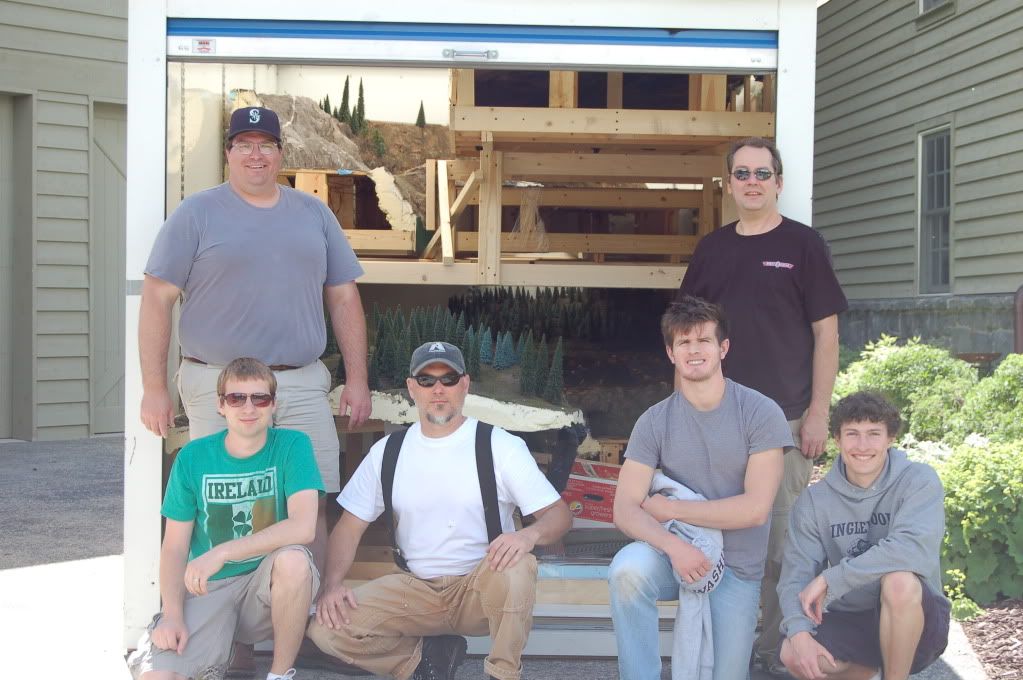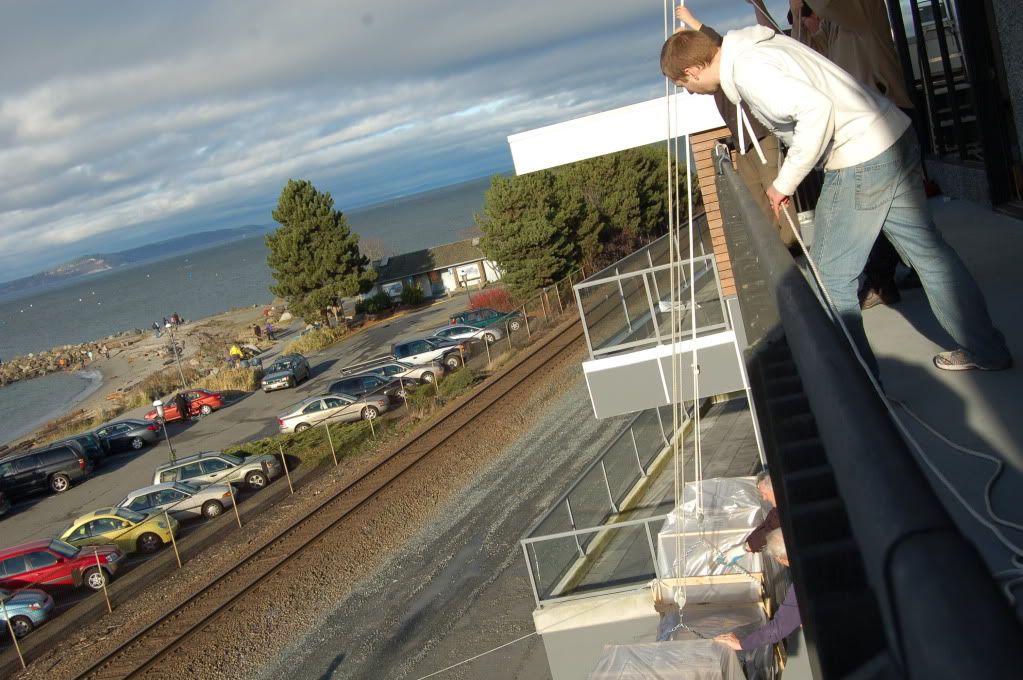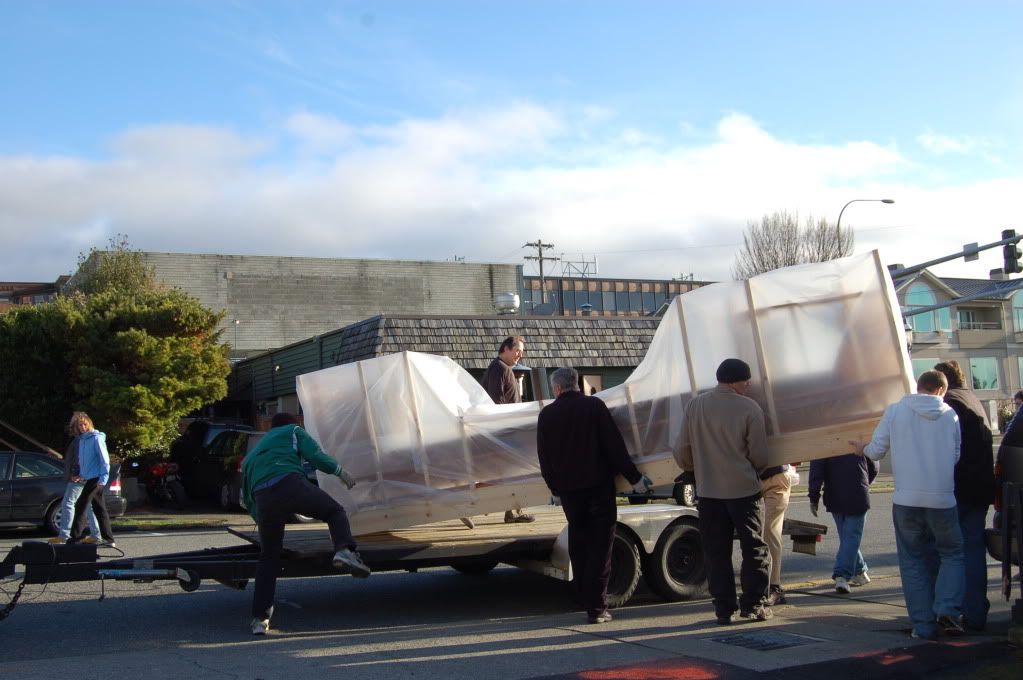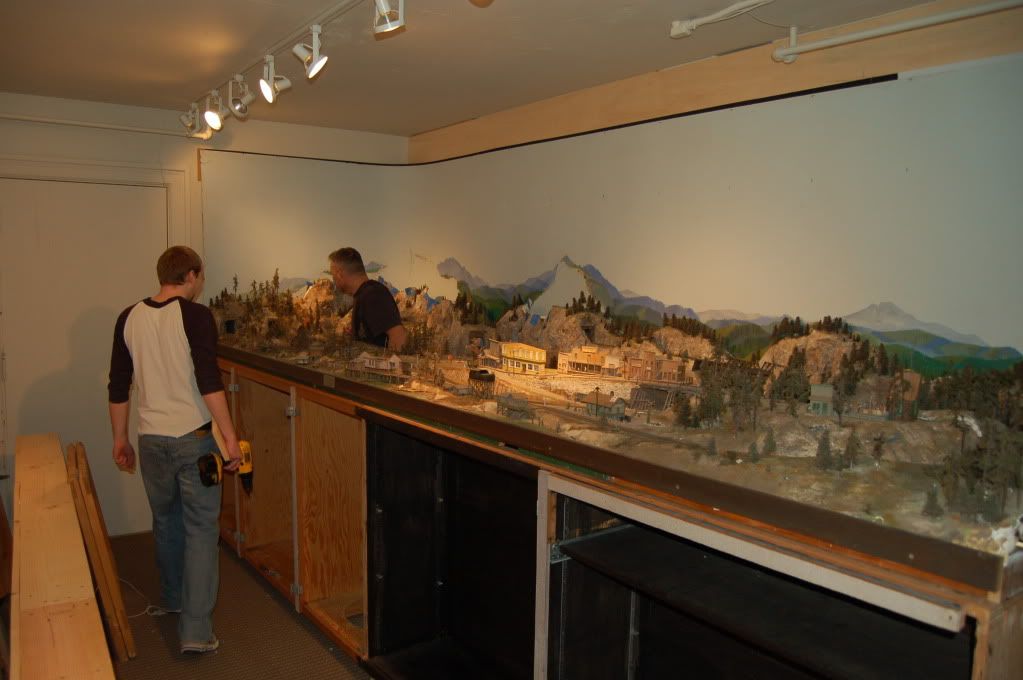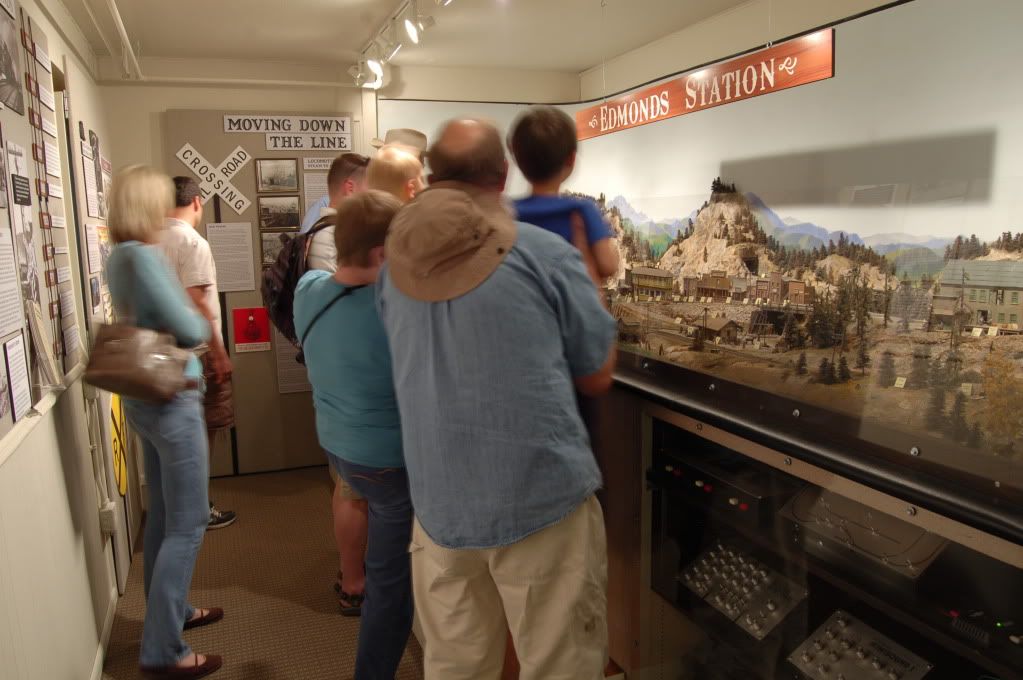I went back and looked at my reciepts where I could find them (I keep a big cardboard box for them) and expenses over the years, and I did a bit of analysis.
I came to a conclusion that materials cost about $100/square foot and an entire layout about $350 sq ft if you count labor. I never really tracked my expenses, and am not surprised at the money I have spent over time - I expected it to be more, actually -- I know two people who have spent at least five times what I have (but I doubt they have had five times as much fun!!!).
I have a layout with 335 sq feet of benchtop, about 350 feet of Fastrack mainline with 20 switches, 200 feet of Superstreets, six AC transformers and 2 DC power supplies, etc.)
- basic benchwork (lumber, nails and screws,paint, etc.) $2,000
- glue and adhesives $1,500
- finishing layout structure (support for track levels, etc. . . . $1,000
- other stuff (skirts, surge protectors, wire looms, fire extinguishers, etc) $500
Total for the benchwork $5,000
- track and Superstreets, swtiches, controls, wiring $7,000
- various ancillary stuff (wire looms and connectors, tape, screws etc.) $1,500
- Z4000 plus five CW80s plus two DC power supplies (Superstreets) $1,500
Total for track & elec $10,000
- scenery materials (folige, water, rocks, molds, paint, other material) $3,000
- trees: estimated 300 @ $10 $3,000
- buildings, scenery detail, and accessories (already mounted) $3,500
- buildings, etc., not yet mounted $1,500
-scratchbuilding supplies and such $2,000
- model cars and trucks on the layout or on display (about 170) $5,000
$18,000
Total for layout $33,000 ($98.5/sq ft materials)
Estimated time to build above 2400 hours @ $35/hour
--would be $84,000 ==> $117,000 total for layout, or $349/sq. ft.
-Recent locos: 27 BEEPS, 8 other RMT, 6 WBB, 11 MTH, 29 Lionel, 4 other $40,000
-4 Prewar, 6 postwar, 9 MPC up through '93, Lionel, Kusan, Marx, other $4,500
-Rolling stock - 26 passenger cars, 47 assorted other, 9 cabooses $8,500
-Superstreets vehicles - total 97 including inventory for future bashing $6,500
-Other (track inspection cars, operating accessories, etc.) $2,500
$62,000
- train-specific tools (test rollers, sound & traction-pull meters, etc. .) $1,500
- spare track, transformers, etc., on hand $1,000
Other spare parts (motors, pickups, sound boards) $1,000
$3,500
$7,000
The trains themselves seem to have cost about twice what the layout did . . .



